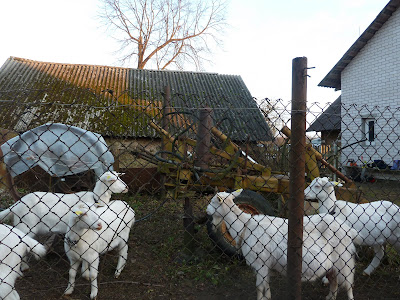
Traditional rituals are alive in Lithuania. One example of this is the blessing of a young couple and their yearling farm (photo). A respected elder presented a benediction of good wishes followed with a splash of vodka above the couple’s heads. Gifts were given, such as a pair of clippers to prune the goat’s hoofs. This celebration began with a full morning of work by farm friends, whom completed tasks best done collectively. In early afternoon, a large wooden table in the barnyard was filled with foods brought by the volunteers and host: homemade goat and cow cheese, fresh, black breads, preserves made with plums and pumpkin (yum!), and kvass, which I could not stop drinking. The preparation and consumption of cepelinai was the highlight of our feast.
Cepelinai is a Lithuanian national dish. This large dumpling is made from grated potatoes that are stuffed with minced meats, usually pork or beef. Preparation requires peeling and grating raw potatoes (best a potato high in starch). Excess liquid is squeezed out using a cheesecloth. After allowing the potato starch to settle, the liquid is poured off and the starch is added back to the potatoes. Boiled and than mashed potatoes are kneaded with the raw, grated ones, plus a dash of salt. An egg-sized amount of the mixture is formed into patties, with spoonfuls of the previously prepared minced meats placed into the center of the patties. The patties are closed around the filling forming an oval-football shaped dumpling. Traditionally, the filling is made from ground beef or pork, dry cottage cheese or mushrooms with salt and spices. Next, the dumpling is carefully placed in salted boiling water and simmer for approximately 30 minutes. Cepelinai are eaten with bacon, or melted sour cream, or as our host made, an onion-bacon-mushroom sauce. This is a meal for gourmandizers. Yummy!
































